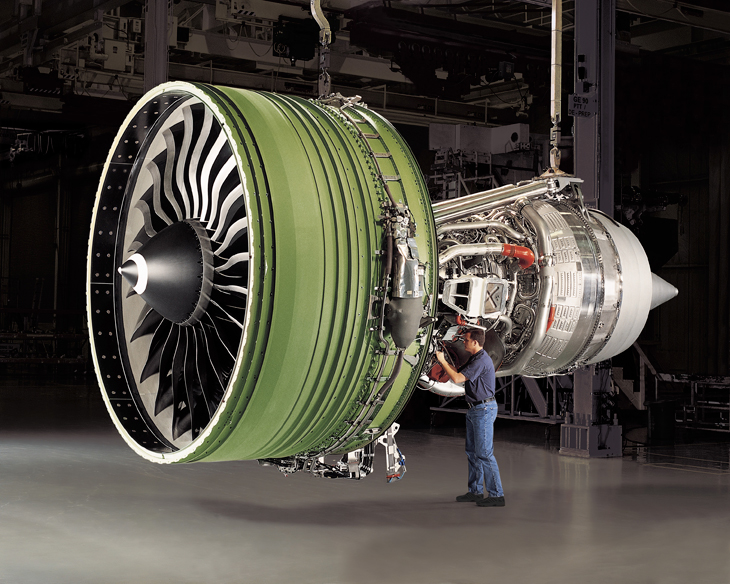Turbojet engines were the first jet engine created (in the 1930's), and are the most simple of all. They do not have a fan at the front to aid in the intake of air or split the air into two parts, therefore all of the thrust is generated by the high velocity stream of air that passes through the engine's core. Since there is no fan to aid in the intake of air, it is relatively inefficient at slower speeds and has been replaced by Turboprop engines, at high speeds the Turbojet engine has been replaced by the Turbofan engine which are quieter and more efficient. Air is taken into the engine through the intake shaft, the air is then compressed 8 to 12 times by the compressor before being passed to the combustion chamber. At the combustion chamber it is super heated before passing through the turbine and out the nozzle. The thrust of a turbojet engine can be greatly increased by the addition of an afterburner which is placed after the turbine. An afterburner adds more fuel to the air that passed through the turbine, heating it up and in turn creating more energy and resulting in up to 40% more thrust which makes a turbojet engine viable at very high speeds such as in fighter jets. Turbojet engines are praised for being the first jet engine created, their capability to reach high speeds, and their compact and relatively simple design. However they are loud and inefficient causing them to be the least used engine of the three.
TurboProp
Turboprop engines work on the same principle as a turbojet
engine does except the turbine works to power both a
propeller and the compressor. The added propeller creates
more thrust for less fuel by sucking extra air into the
engine, almost all the thrust is generated by the propeller
and the air that passes through the core of the engine is
used to spin the turbine to power that propeller. This makes
turboprop engines much more fuel efficient than turbojets.
However this efficiency only works up to a certain speed,
around 500 mph, speeds greater than this the propeller is
typically replaced by a fan and the engine becomes a
turbofan. The turboprop engine is praised for its extremely
high efficiency at lesser speeds and altitudes however the
limits on speed and altitude are its major downfall, along
with a higher chance of break down in the gear systems due
to their heavy build.
TurboFan
Turbofan engines are the most widely used jet engines,
almost every commercial aircraft uses turbofan engines. They
are more efficient than turbojets and can achieve higher
speeds than turboprops, they are also much quieter than
either of the two. They work by splitting the air into two
flows, the bypass air and the core air. Core air passes
through the rest of the engine and is used to power the fan,
and compressor, however unlike turboprops a good amount of
thrust is still generated by air that has passed through the
core. Bypass air is air that does not travel through the
core and is accelerated by the fan, it is cooler than air
that passes through the air through the core and when a
mixer is added to the turbofan engine it allows the cool and
hot air to mix before being shot out of the back of the
engine and increases the thrust of the engine. Low bypass
turbofans use more jet thrust rather than fan thrust and
high bypass turbofans use more fan thrust than jet thrust.
Afterburners can be added to low bypass turbofans to create
an engine that is capable of incredibly high speeds, and
this is the design that is used in most military aircraft.
High bypass turbofans are used in large commercial aircraft.
Turbofans are praised for their versatility, quietness, and
their high efficiency. However they are much larger than
turbojets and less efficient at high altitudes where air
pressure is lower.


